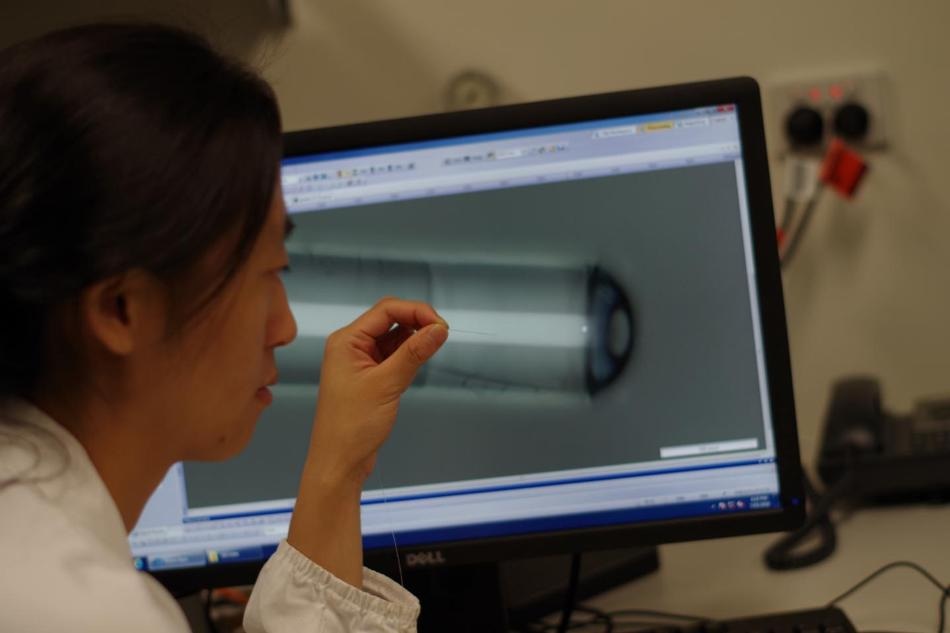Apr 16 2018
Scientists from the University of Adelaide have designed a first-ever tiny fiber-optic probe with the ability to measure temperature and observe deep inside the body at the same time.
 The tiny imaging and sensing probe is as thin as a single strand of human hair. (Image credit: University of Adelaide)
The tiny imaging and sensing probe is as thin as a single strand of human hair. (Image credit: University of Adelaide)
The probe might assist scientists in finding better treatments to inhibit drug-induced overheating of the brain, and possibly enhance thermal treatment for cancers.
“With an outer diameter of only 130 microns, the probe is as thin as a single strand of human hair,” stated Dr Jiawen Li, a researcher with the Adelaide Medical School, ARC Centre of Excellence for Nanoscale Biophotonics (CNBP) and the Institute for Photonics and Advanced Sensing (IPAS) at the University of Adelaide.
“This means it can be delivered deep inside the body in a minimally invasive way. It also allows us to see and record physiological data in real time that we weren’t able to access before.”
The researchers have developed the miniaturized imaging and sensing probe to assist in the investigation of drug-induced hyperthermia.
Using some drugs such as ecstasy can make certain brain regions overheat and then become damaged.
Using the probe’s imaging function during experiments, our medical collaborators would be able to see deep inside the brain of a living organism and guide the placement of the probe to the right brain region.
Then, they can use the probe’s built-in thermometer to monitor any changes to the local temperature of that region.
Dr Jiawen Li
This will enable scientists to gain better insights into the development of hyperthermia develops, to test modern medical treatments, or to analyze the toxicology impacts of drug-taking.
The probe can also help understand other diseases and treatments in other parts of the body, such as the optimization of thermal treatment of cancers.
The first generation of the probe can take images as well as measure temperature. Dr Li believes that the next-generation probes will be able to carry out other measurements—for example, oxygen saturation, pH values, and accumulation of fat in arteries.
“This research is an example of the inspiring transdisciplinary culture nurtured at IPAS and CNBP to enable new tools not possible within a single discipline,” stated Professor Heike Ebendorff-Heidepriem, the Deputy Director of IPAS.
“IPAS and CNBP has world-class expertise in photonics, and Adelaide has a large number of medical researchers that allows us to explore new ways to use light-based technologies,” stated Professor Robert McLaughlin, Chair of Biophotonics at the University of Adelaide.
“It makes South Australia an exciting place to explore the overlap of technology and medicine.”
Dr Li’s study has been reported in the Optics Letters journal. Dr Li was a South Australian finalist in Fresh Science, a national program that assists early-career scientists to find and share their stories of discovery.